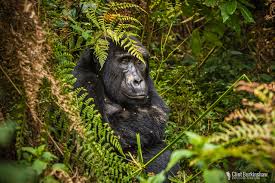Can you go Gorilla Trekking when your pregnant?
Can you go Gorilla Trekking when your pregnant? Gorilla trekking is an exhilarating adventure that allows you to observe these magnificent creatures in their natural habitat. However, if you’re pregnant, you may be wondering whether it’s safe to embark on such an expedition. In this blog post, we’ll explore the considerations, risks, and expert recommendations regarding gorilla trekking while pregnant, enabling you to make an informed decision.
Understanding the Risks: When assessing the feasibility of gorilla trekking during pregnancy, it’s crucial to consider the potential risks involved. Factors such as physical exertion, altitude, exposure to wildlife, and the presence of certain diseases need to be taken into account.
Consult Your Healthcare Provider: Before making any decisions, consult your obstetrician or healthcare provider. They can assess your specific circumstances and advise you on whether gorilla trekking is suitable for you. Your healthcare provider’s expertise is invaluable in ensuring the safety of both you and your baby.
Physical Demands and Fitness Level: Gorilla trekking can be physically demanding, involving long walks through challenging terrain. Assess your fitness level and honestly evaluate whether you’re physically prepared for the rigors of the trek, considering the changes that pregnancy brings to your body.
Altitude and Environmental Factors: Gorilla trekking often takes place in mountainous regions where altitudes can vary. High altitudes may pose risks for pregnant women, including decreased oxygen levels. It’s important to research the specific location and altitude of the trek and discuss it with your healthcare provider.
Wildlife and Disease Exposure: Gorillas share 98% of their DNA with humans, which means they are susceptible to many of the same illnesses. Close contact with gorillas may expose you to certain diseases. Ensure that you understand the necessary precautions, such as maintaining a safe distance, to minimize the risk of transmission.
Safety Measures and Precautions: If your healthcare provider determines that gorilla trekking is safe for you during pregnancy, it’s essential to follow all safety measures and guidelines provided by the trekking company. These may include maintaining a safe distance from the gorillas, practicing good hygiene, and adhering to strict rules to protect the gorillas’ well-being.
Consider Alternative Options: If gorilla trekking is not recommended during your pregnancy, explore alternative ways to experience and connect with nature, such as wildlife sanctuaries or educational programs focused on conservation. These options can still offer meaningful experiences while prioritizing your health and the well-being of your baby.
Conclusion: Gorilla trekking is an extraordinary adventure, but it’s crucial to prioritize your health and the safety of your unborn child when making decisions during pregnancy. Consult with your healthcare provider, thoroughly assess the risks and physical demands, and follow expert recommendations to make an informed choice. If gorilla trekking is not advisable, remember that there are alternative opportunities to connect with wildlife that can still provide enriching experiences.

